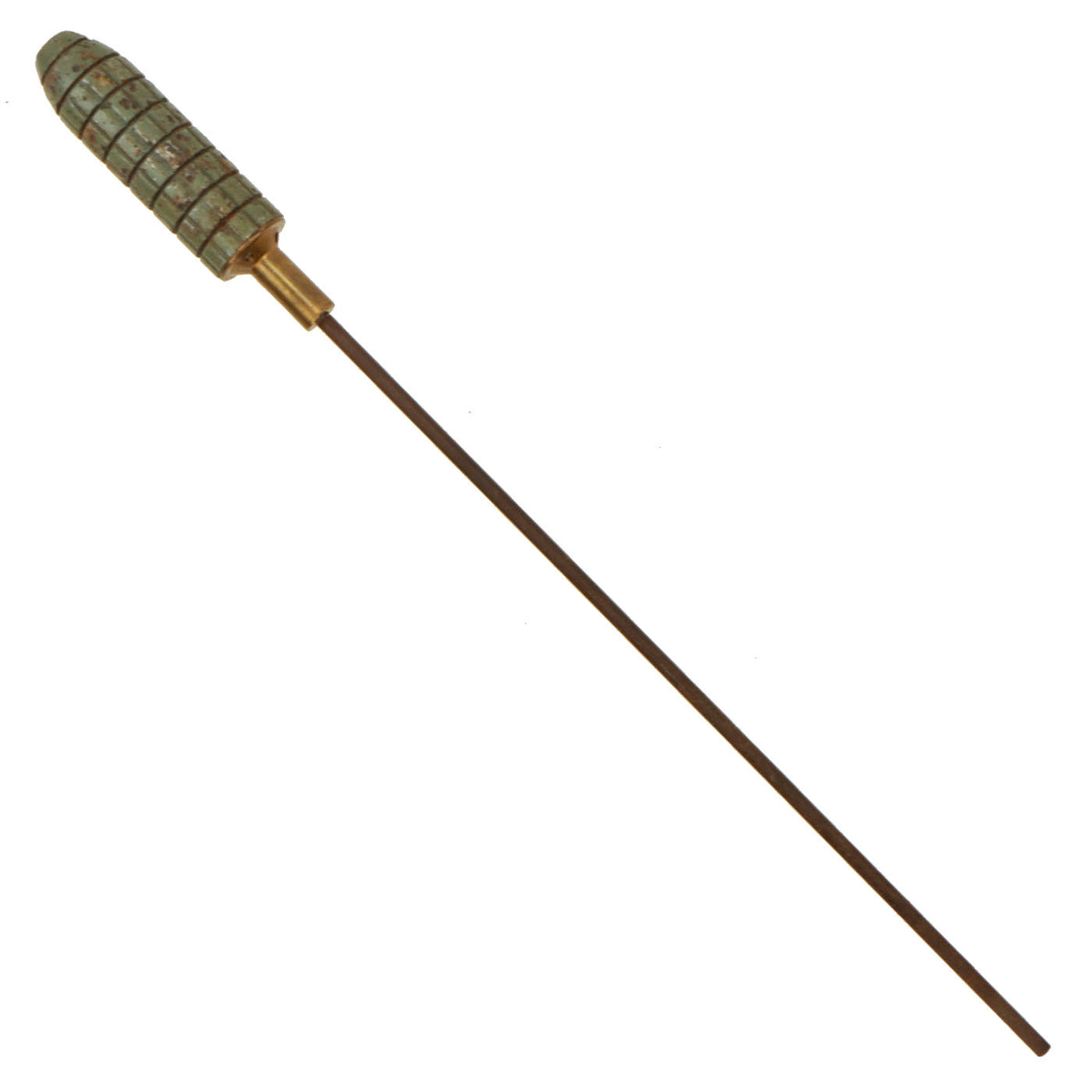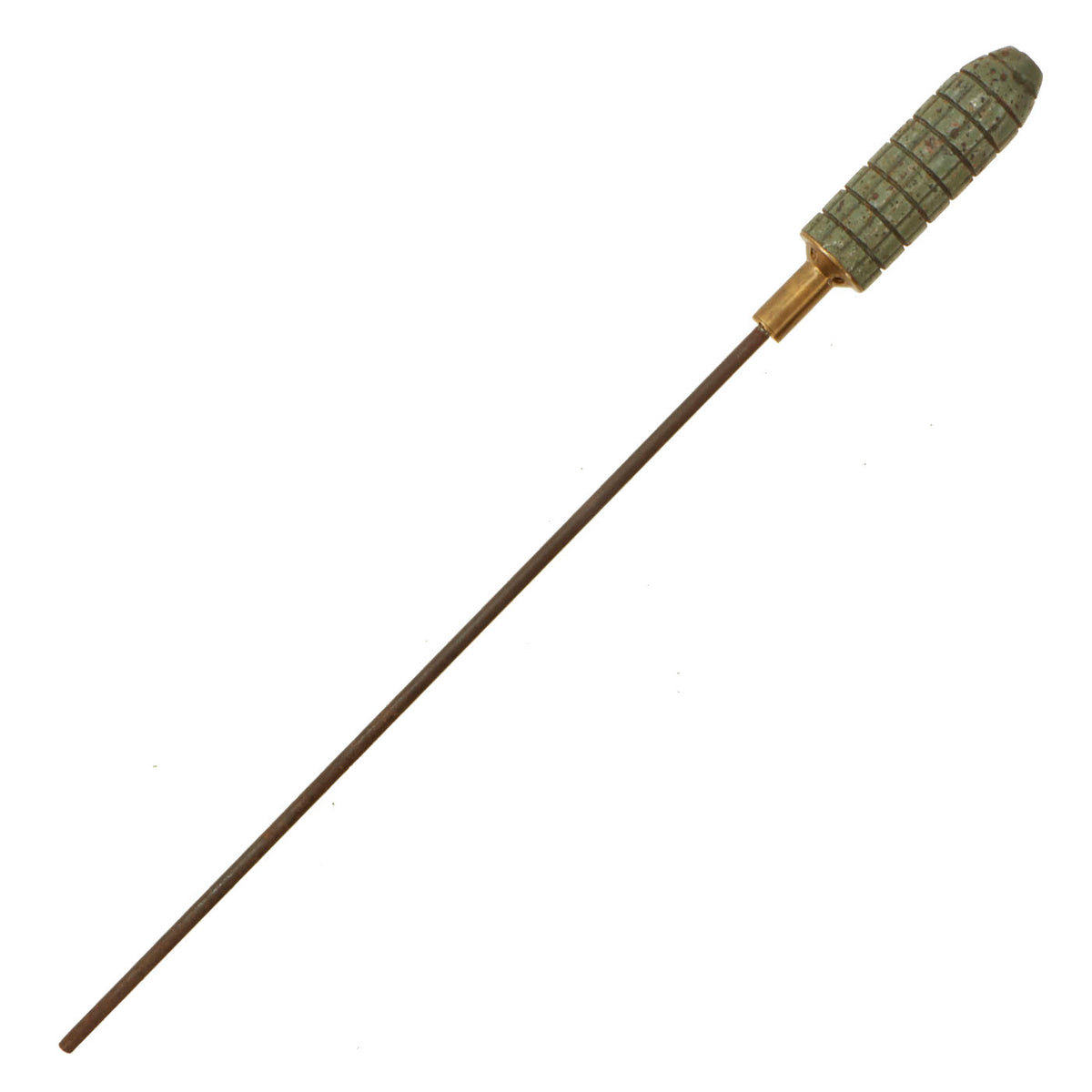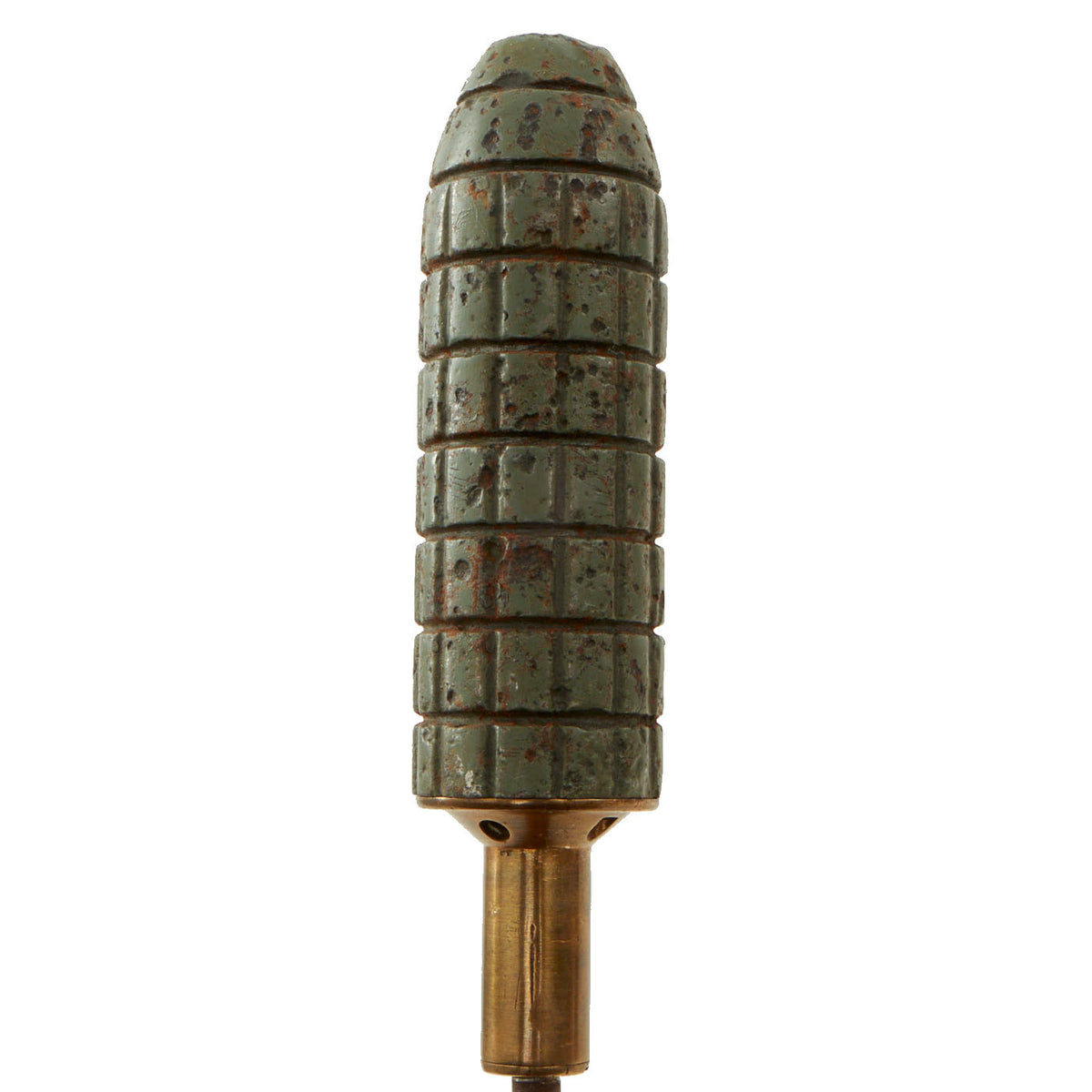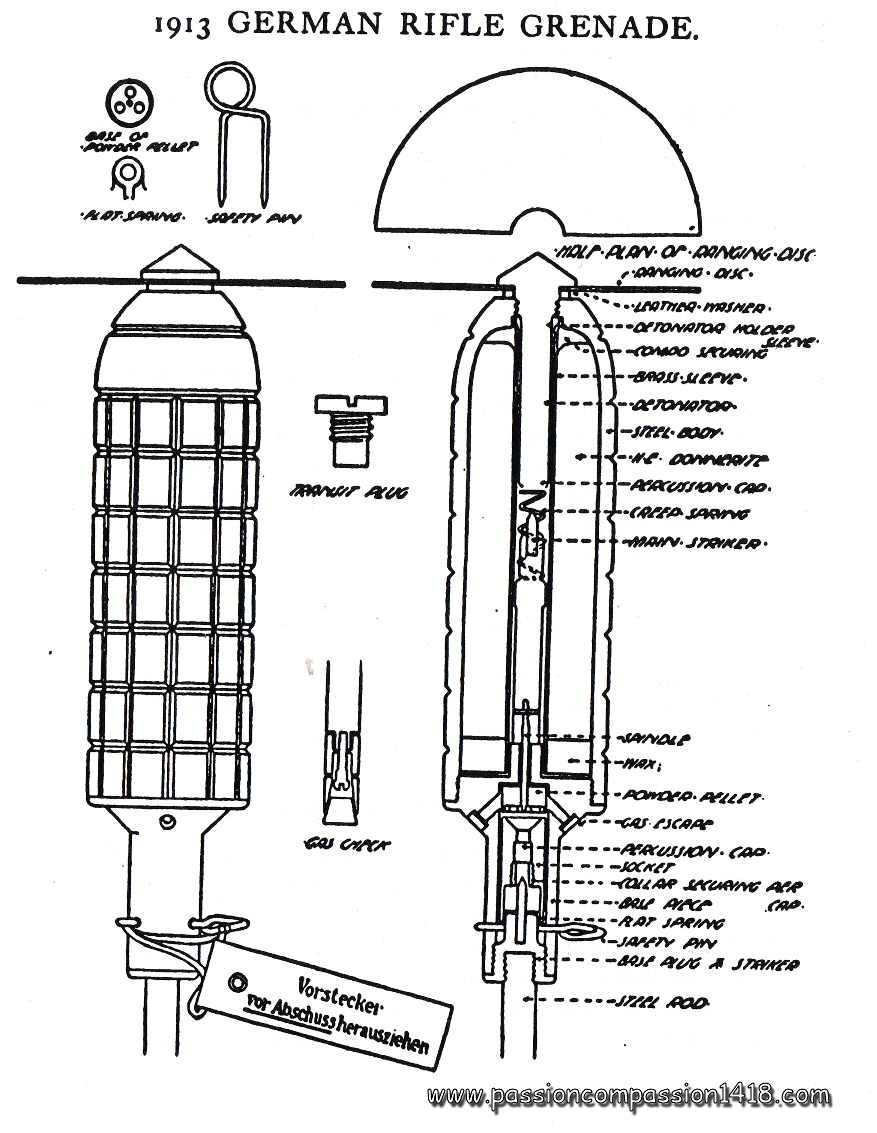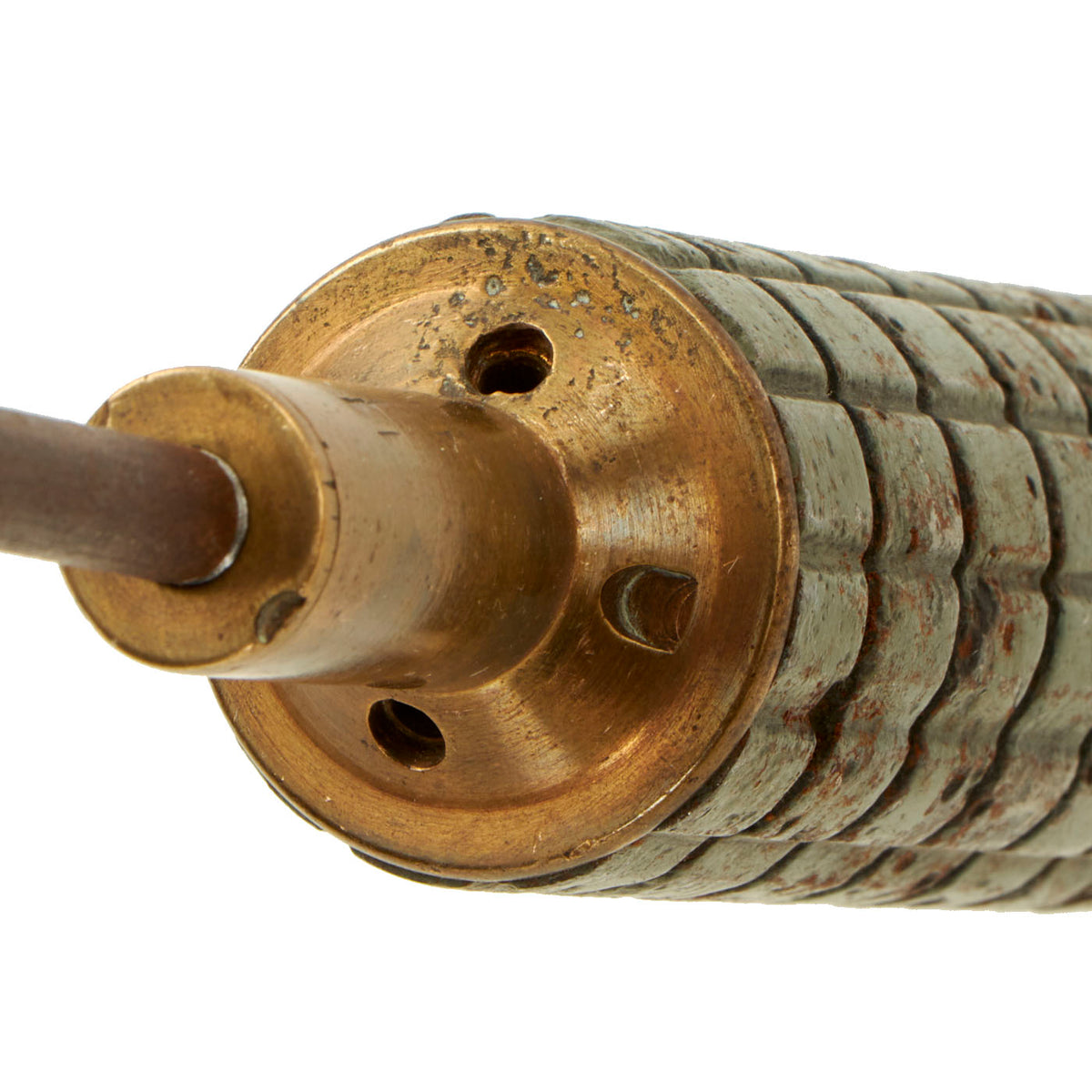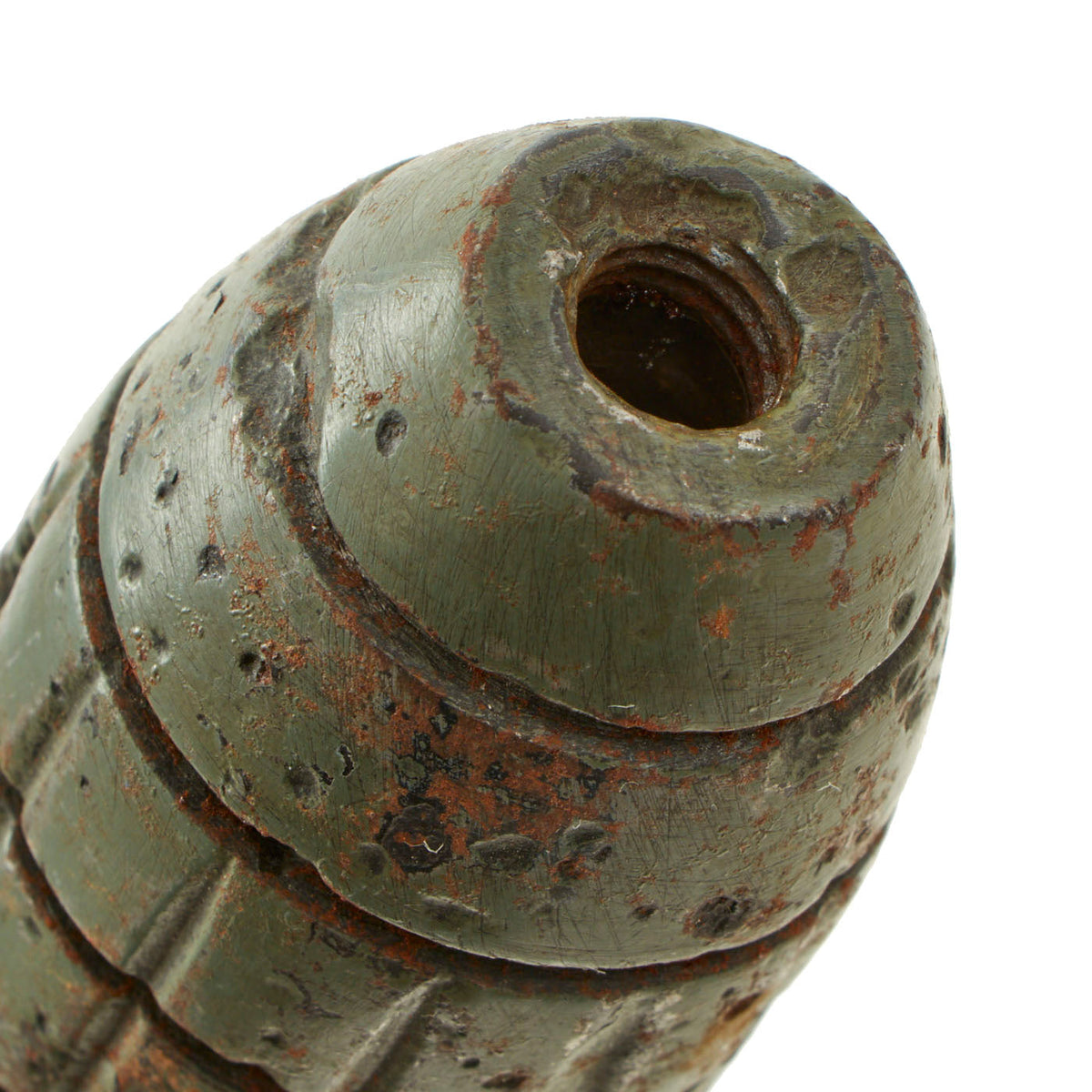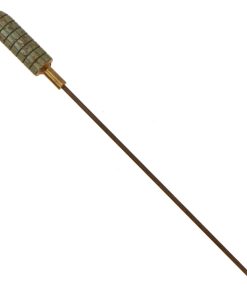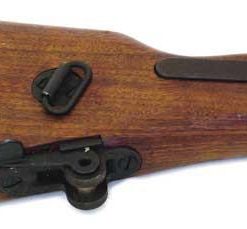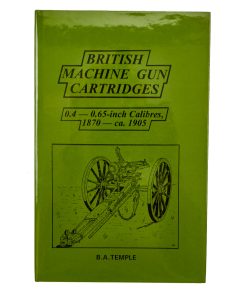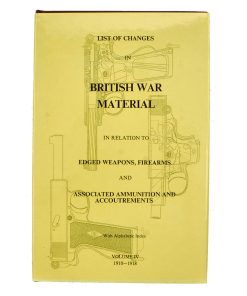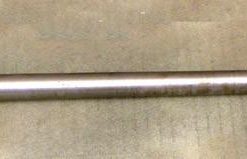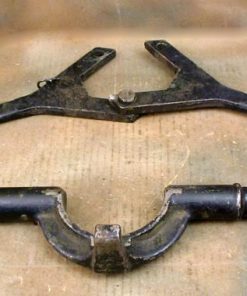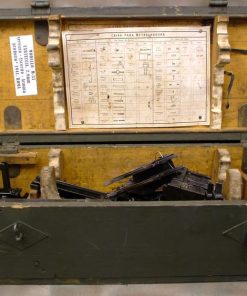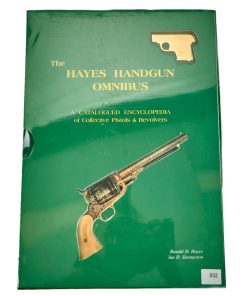Original German WWI Karabingranate M1913 Rifle Grenade with Replica Rod – Inert Original Items
$ 595,00 $ 178,50
Original Item: Only One Available. This is a very nice Karabingranate M 1913, as used during the Great War. This grenade is completely inert as specified by the ATF, and cannot be converted to an explosive device.
German rifle grenades were propelled with a rod that was inserted into the rifle barrel. These had to be fired with a blank cartridge or it would cause the rifle barrel to explode. This example is a very rare M1913 rifle grenade. It had a complex safety that holds the firing pin in the rear position with a small powder charge, when the safety pin is pulled from the base of the grenade and fired, the small charge is ignited by a percussion cap, this burns away the powder that holds the firing pin allowing it to move forward to strike the primer on impact. This grenade would have been filled with TNT and could also have been fitted with a disc to limit the distance it would travel, its maximum range was 350 meters.
As with most early “rod” type rifle grenades, the original rod was removed from this example long ago. A replica made from solid bar stock, aged to match, has been attached to the bottom of the grenade to complete the look.
Still in excellent condition and fully INERT this rare German WW1 Rifle Grenade is ready to display!
History of the German WW1 Karabingranate M1913
The rifle grenade M 1913 is the first of a series of grenades developed by German intended to be lauched using the simple Mauser infantry rifled armed with a blank ammunition, after inserting the long steel rod into the gun.
The 4 mm thick cast steel body with external prefragmentation grooves network, was filled with explosive and traversed by an axial tube that connected the ‘fuse’ head (in fact a simple plug) that held the detonator with the base plate. This one was holding the inertia block mechanism that was armed by the launching energy. This action ignited a small compressed powder rod whose combustion released the movements of a inertia block system that would project a starter against a percussion pin at the impact time. It was clearly a percussion system with pyrotechnical safety, comparable to the one present in many German percussion fuses used in the Kaiser Artillery at the same period.
The range could be adapted by the rifle angle, but when a close range was needed a 9 cm removable disk was screwed at the top of the body that served as a aerodynamic brake during the trajectory.
Fast Shipping with Professional Packaging
Thanks to our longstanding association with UPS FedEx DHL, and other major international carriers, we are able to provide a range of shipping options. Our warehouse staff is expertly trained and will wrap your products according to our exact and precise specifications. Prior to shipping, your goods will be thoroughly examined and securely secured. We ship to thousands clients each day across multiple countries. This shows how we're dedicated to be the largest retailer on the internet. Warehouses and distribution centres can be located throughout Europe as well as the USA.
Note: Orders with more than one item will be assigned a processing date depending on the item.
Before shipping before shipping, we'll conduct a thorough inspection of the items you have ordered. Today, the majority of orders will be delivered within 48 hours. The delivery time will be between 3-7 days.
Returns
The stock is dynamic and we cannot completely manage it because multiple stakeholders are involved, including our factory and warehouse. So the actual stock may alter at any time. It's possible that you may not receive your order once the order has been made.
Our policy is valid for a period of 30 days. If you don't receive the product within 30 days, we are not able to issue a refund or an exchange.
You can only return an item if it is unused and in the same state as the day you received it. You must have the item in its original packaging.
Related products
Uncategorized
Uncategorized
Uncategorized
Uncategorized
Australian WWII Owen MK1 Machine Carbine SMG Custom Fabricated Replica with Sling Original Items
Uncategorized
Uncategorized
Uncategorized
Uncategorized
Uncategorized
Uncategorized
Uncategorized
Uncategorized
Uncategorized
Band of Brothers ORIGINAL GERMAN WWII Le. F.H. 18 10.5cm ARTILLERY PIECE Original Items
Uncategorized
Uncategorized
